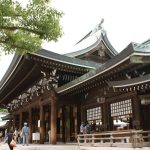Japan – day 2, Tokyo – the continuation of the magnificence…
Sightseeing in Tokyo continues – Shibuya, Harajuku, Meiji Jingu, Tokyo Tower are just some of the places we managed to see on our second day in Tokyo. Another intense day that showed us a whole new face of Tokyo.
The second day in Tokyo (you can find a description of the first day here) we decided to start where we finished the first one. First thing in the morning we headed to the district Shibuya – The most colorful and crowded district, the center of fashion and youth culture.
Before we got there, however, we circled around our neighborhood to find the nearest fire department unit. No, we were not on fire 😉 Before leaving, we had read that the fire department was conducting training to prepare for earthquakes. With special rooms and platforms, you can get a feel for what it's like during a quake and how you should behave. We wanted to go to such a meeting a little out of curiosity and a little out of actual interest/fear, because for some reason, however, hotels are at least equipped with flashlights and instructions on what to do in case of an earthquake. Unfortunately, our plan burned to the ground, as they did not conduct such training in the nearest units.
That day we tried our luck at several more places and some even held such training, but only on specific days.
Morning on Shibuya
So we drove in the direction of Shibuya.
This entertainment district makes a completely different impression in the daytime. It's still noisy from the screens, billboards and stores, but at least the neon lights don't ring so much in your eyes anymore. There are also fewer people (although still crowded).
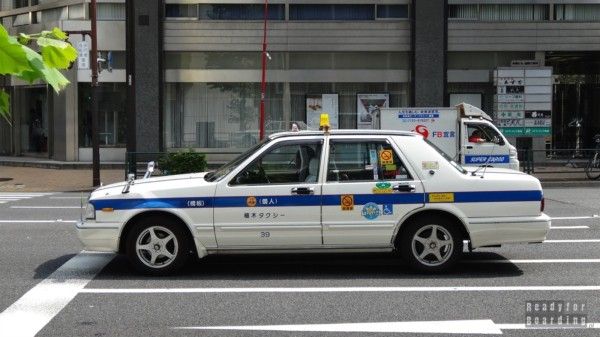
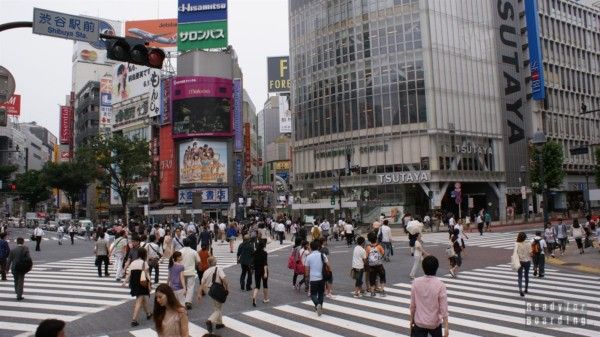
In the square, near the intersection, there is a statue of the Hachiko dog – He walked his master to the train every day and waited assiduously until he returned. One day the master died, and the dog continued to come and wait for his master for another 10 years. There was even a full-length film made on the subject, and a statue was erected at the station to commemorate the dog's devotion and loyalty.
Currently, it is a meeting place and a good landmark.
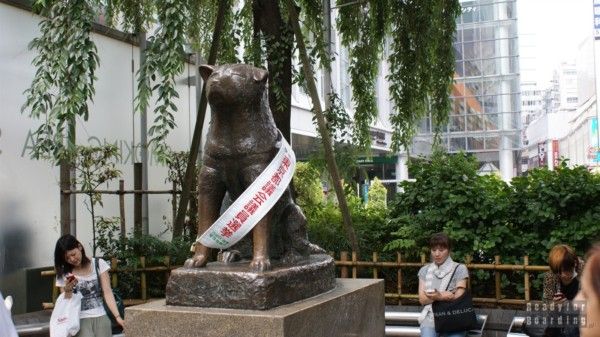
Next, we walked towards Shibuya 109 – of the famous meeting place of the local youth. This building catches the eye from afar thanks to the giant signs on it and the distinctive shape, which can be described as a supported cylinder. This building has 10 floors full of boutiques (total of approx. 100 stores).
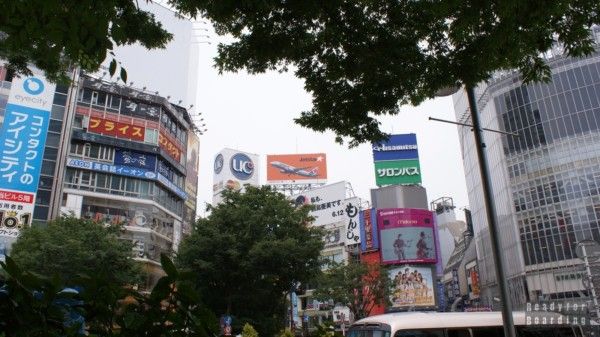
We are attacked from everywhere by advertisements, and wherever we do not reach with our eyes there are exhibitions with things we would never wear or whose purpose we have not learned so far. Well, every country is a custom, but it will turn out that Shibuya is only a foretaste of what awaits us next.
Japan's love hotels
Fortunately, you only have to walk a piece away and you can breathe in the. From a bustling, noise-strewn street, you can suddenly find yourself in cramped, low-rise buildings that foster an atmosphere of intimacy… yes! We are in the Love Hotel district (the so-called. from ang. Japan's Love Hotels). Fact, we weren't here at night, so we don't know if it's turning into a red-light district, but during the day it was quite tolerable here.
Love hotels In Japan, this is a very interesting topic in general and will definitely get a separate entry. How to recognize them? What's inside and, ultimately, who uses them?
Recognizing them may not be as easy as it may seem. While some directly from the very entrance exude sexiness some look completely inconspicuous. How to recognize a Love Hotel? The easiest way to get a price tag. If there are hourly prices or time slots on the board, chances are you are standing in front of a love hotel. You'll often find screens next to them, pictures of different rooms and really fancy furnishings. Many of them are stylized on a specific theme, and already from the outside you can see that the front of the hotel completely does not match the entire facade of the building.
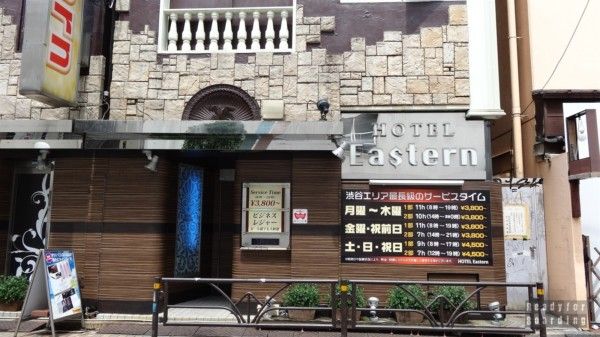
Descriptions on the outside are generally in Japanese, which makes it difficult for tourists to use them (by the way, the Japanese are rather reluctant to talk about them, but they use them to a great extent). Fortunately, technology comes to the rescue and in many hotels of love guests are greeted by screens with previews of the rooms (not live, of course!), so you can see what you're paying for. Depending on your funds, you can choose from basic rooms or those stylized as fairy tales, movies, torture rooms, richly decorated chambers, prisons… their imagination knows no bounds, and here we will spare going into detail.
However, this does not mean that these are places where you come to have kinky sex. Japanese people use them because they simply don't have enough space at home and live with their parents for quite a long time. They are also used by tourists, because it may be cheaper to rent love hotel than other options.
To use such a room sometimes you just have to arrange everything in a machine – more and more facilities are self-service!
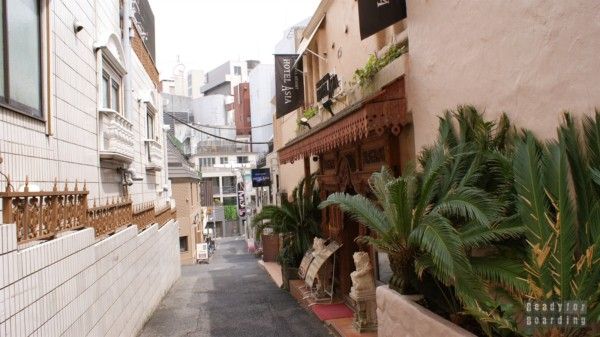
We mentioned that Japanese people have little space in apartments. Hotels are no better – we have not yet slept in such small and ingeniously arranged hotels. Amazing arrangement, but also cramped.
The use of every free square meter can also be seen in the streets of. They do not put multi-story parking lots in city centers. They put parking lots simply stacked, consisting of variously operating elevators. Often these are simply hidden in buildings. Here we have an example under a cloud 😉
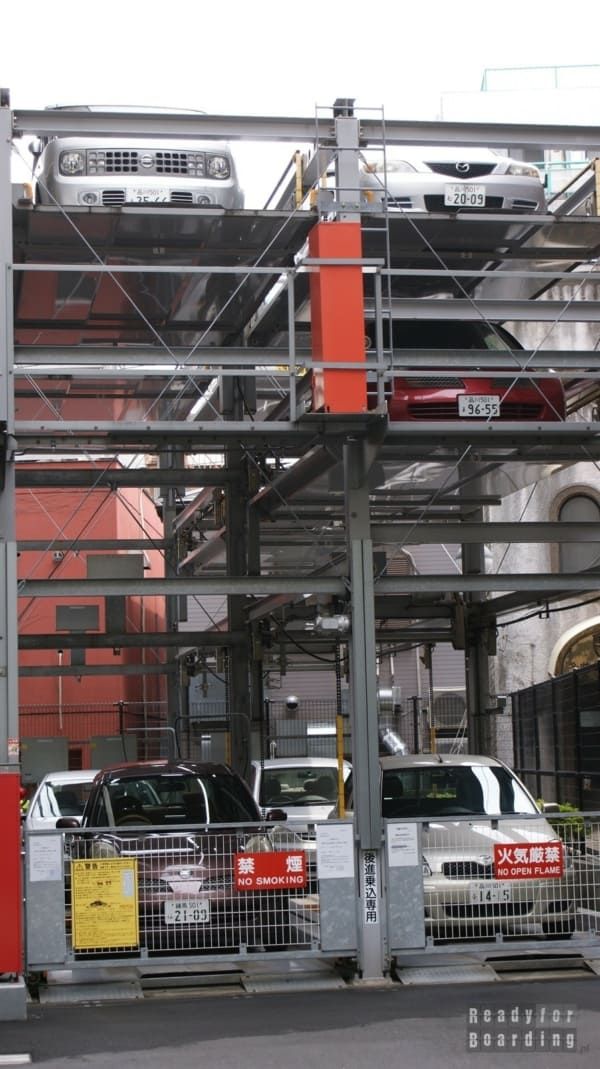
Meiji Jingu
We continued walking towards Meiji Jingu temple (ang. Meiji Shrine) – although if we were to be completely correct we should write: shintō chram , not temple (we will also write about the differences and similarities another time). This is a shrine dedicated to Emperor Meiji and his wife, Empress Shoken, and inside are his ashes.
Entering from Harajuku Station, you can immediately walk through the large wooden torii and enter the vast grounds of the shrine or go to Yoyogi Park. If you will be in the cherry blossom season, be sure to go to the park 🙂
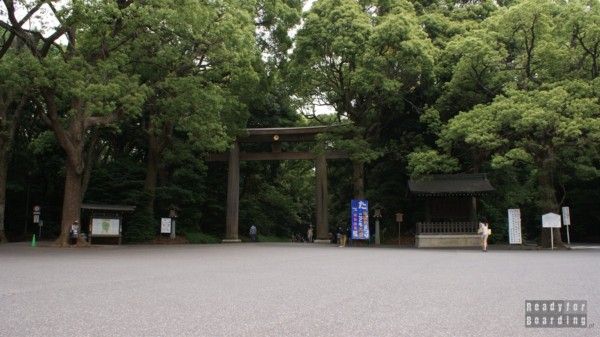
On the way through the wooded area to Meiji Jingu you can see m.in. Barrels of sake (called taru), which were donated to the temple by the producers to be consumed during various festivals. In the old days, sake was produced and consumed in Shintoist temples, and in some shrines this tradition (of production) is still preserved today.
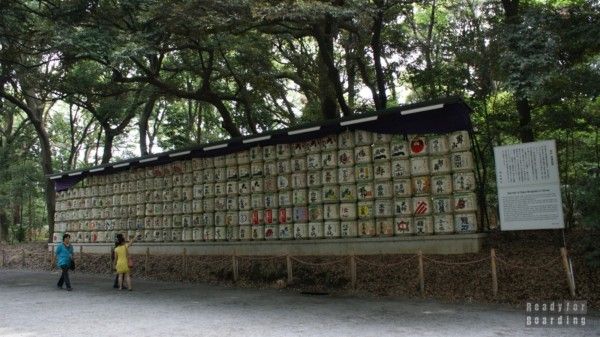
Closer to the religious buildings themselves, as in other shrines, one can find distinctive wooden boards with inscribed prayers left by visitors.

To reach the buildings themselves, one has to walk several hundred meters along a road among the trees. This is peculiar because, after all, we are in the center of a city of 10 million people, full of skyscrapers, skyscrapers, neon signs and advertisements, and here we can at least for a moment feel like we are in the forest.
Meiji Jingu is the most famous chram in Tokyo. Unlike Senso-ji temple, you won't see numerous decorations, glamour, bright colors and stalls here. The buildings are made of cedar wood and are characterized by simplicity and austerity. The grounds of the chram are quieter, quieter, slower. Definitely a better atmosphere than in the most popular Buddhist temple.

Harajuku
Across the street is another must-see place, very different from the peaceful shrine grounds and park Harajuku, with the street Takeshita Dori With distinctive Japanese youth. Yes, it's the stores and their customers here that are so unique that you can't take your eyes off them.
It is here that you can meet the most peculiarities and even fashion victims. Already at the station we enter the world of cosplay, gothic, gyaru/ganguro, kawaii and many others that it is impossible to write out. Should anyone find that they want to look and dress like them, this is where they will find all kinds of outfits and accessories that they can purchase.
The appearance and attire of the young people is a peculiar attraction for tourists: a mix and match of punk, manga, lolita and Hello Kita fan styles is the order of the day. What's more, it's very cultural here, no one accosts anyone, and each subculture lives in harmony with the other (at least that's the impression they give). No one is rioting, no one is eating in the street, no one is littering and no one is walking through a red light. It can give the impression that the attire is just a mask for these quiet, close-knit people or the only way to stand out from the crowd.
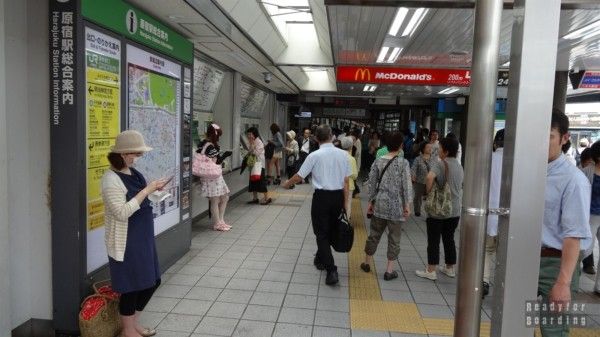

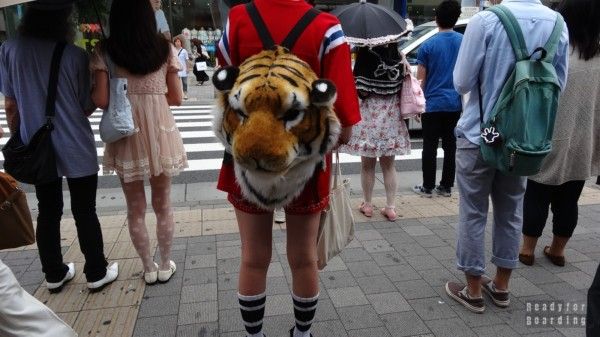
The street is as colorful as the customers who visit it – in addition to stores selling clothes, accessories, you'll also find tattoo studios, beauticians, hairdressers and plenty of other establishments and stores that we couldn't even name 😉 Lots of kitsch, plastic but also interesting ideas and initiatives. We were captivated by the pancake stalls along with the mock-ups on display (approx. 40-50 kinds of sweet and salty pancakes) and stores with everything in pandas. Just around the corner, you can also find European stores like Zara or H&M (prices due to the lower yen exchange rate were more favorable than in Poland.).

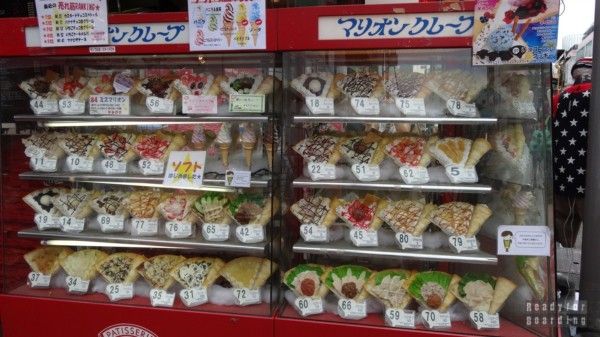
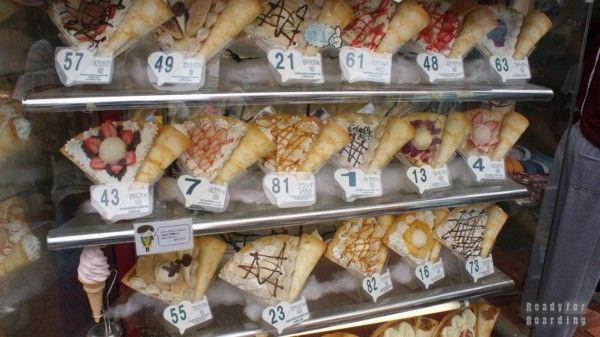
Also worth mentioning is the chain of stores DAISO, On Takeshita Dori you will also find this store. This is a great Japanese chain of "everything for 5 zloty", or more precisely "100-yen shops". Although there are also products for 200, 300, 400 and 500 yen each. What you can buy there? All! From food to souvenirs at affordable prices. Recommended for everyone!
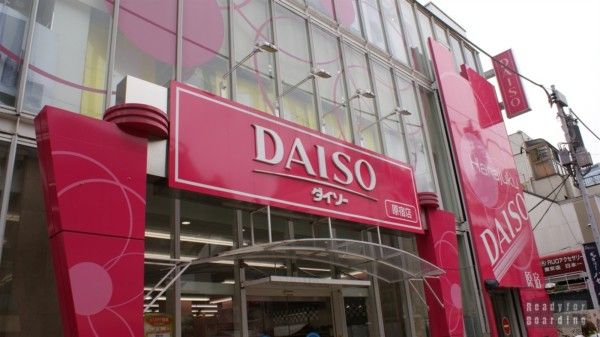
Tokyo Tower and… Jizō statues
After this spiritual and cultural experience, we headed east towards Tokyo Tower. This is Japan's answer to the Eiffel Tower, surpassing it by a full 9 meters (Tokyo Tower – 333 meters, Eiffel Tower – 324 meters). Its construction was completed in 1958 (that is, 69 years after the completion of its Parisian counterpart).
However, it was the European building that impressed us more than the Japanese one. This may be due to the tower's very surroundings – there is nothing like the Elysian fields in Tokyo, the tower is right on the street.
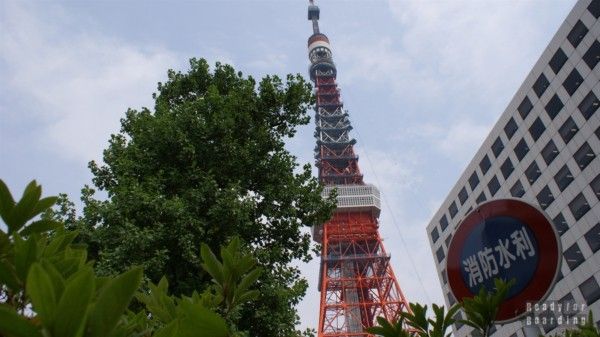
Near the tower is another Buddhist temple, where you can take a break from the rest of the tourists. This was our second day in Japan and we were interested in every temple and chram, but when we discovered that they were at every turn our enthusiasm cooled a bit.
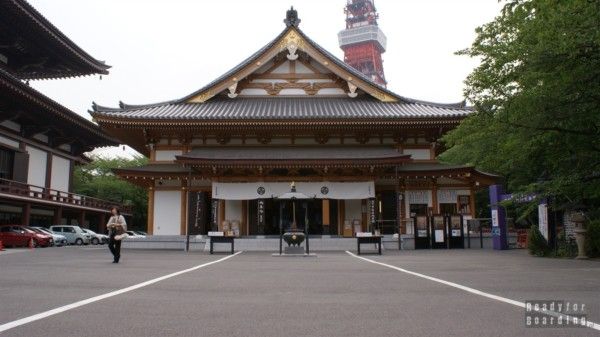
Here we were able to take a closer look at the buildings in peace and quiet, and saw for the first time the famous Jizō statues, Which we will encounter many more times during our stay in Japan. Although they appear charming at first glance, there are human dramas behind them, as each statue symbolizes a child who was not born, whether through miscarriage or abortion.

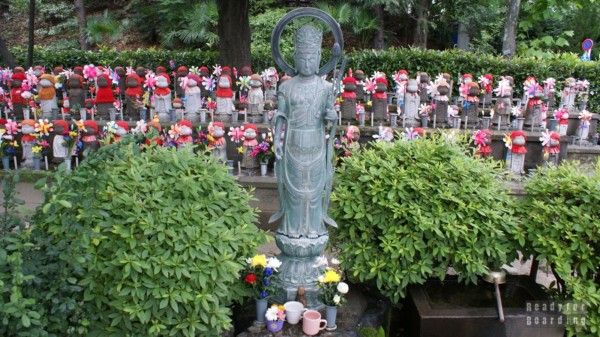

Odaiba Island
After a short rest we set off on a walk towards the harbor. We managed to find a place from where we had a relatively nice view of the Rainbow Bridge. Unfortunately, the clarity left a bit to be desired, and even at this hour there were no colors visible on the bridge, which would explain the name of the bridge. We hoped that in the evening it would show us its true face.
A little higher up was the train station that took us to the island's Odaiba. Unfortunately, all-day tickets work on this railroad, so we had to pay extra for the ride. On the bridge, in addition to the railroad tracks, there is an expressway, a normal road as well as a pedestrian walkway (we didn't see those).
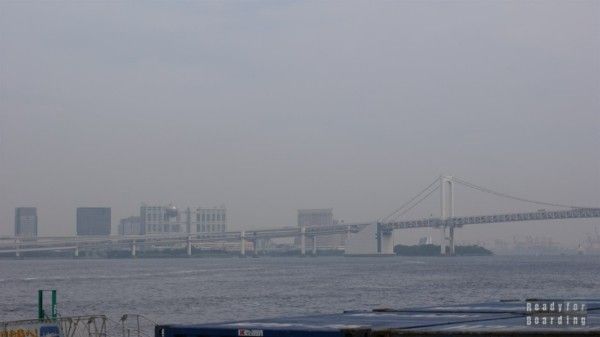
The island of Odaiba itself is for us the opposite of Tokyo and Japan in general. Accustomed after just two days to cramped, use of every free space we suddenly experience a little shock. There is just a lot of unused space on this island. Wide sidewalks, large and empty parking lots, lots of greenery, multi-lane roads on which single vehicles glide. Skyscrapers stand alone, just waiting for more to be built in the immediate area to complete the landscape.
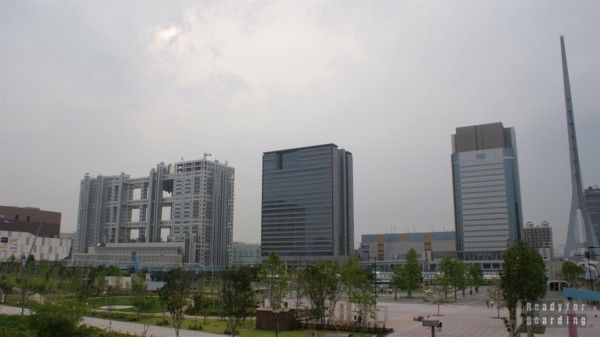
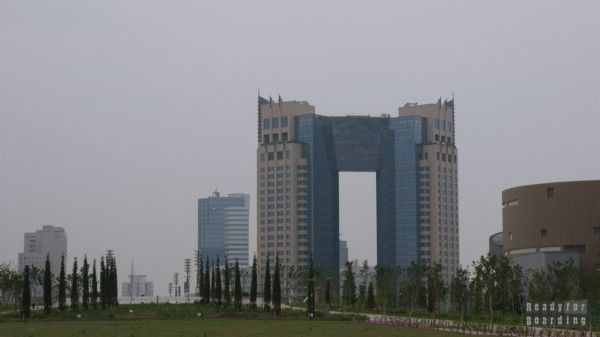
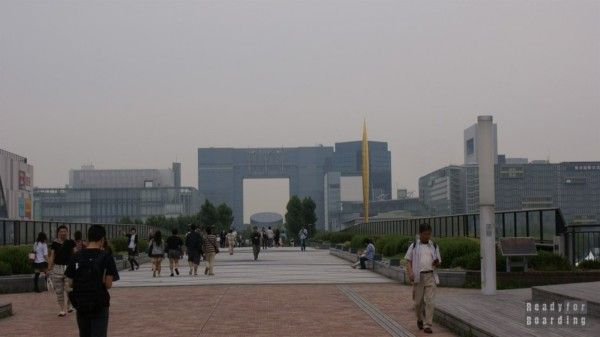
There are also quite a few attractions on the island: Toyota Show Room (unfortunately, only a small part was open); TV building (Fuji TV), From which you can enjoy the skyline; a smaller version of the Statues of Liberty (what they have with this imitation of other countries?!).
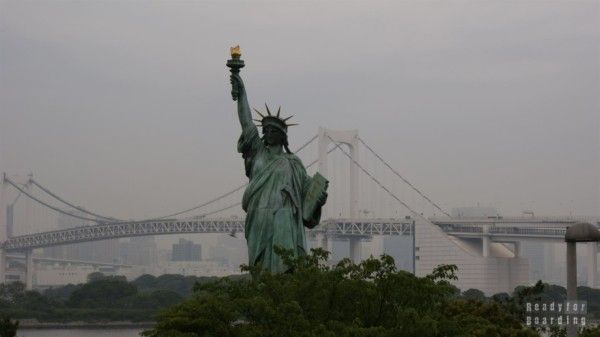
There is a boardwalk along the waterfront, which offers a beautiful view of the other shore, the Rainbow Bridge and the small boats that peacefully cruise on the water (a view we especially recommend in the evening, when the boats glow with a thousand colors). During our stay, clouds were gathering over the promenade and it seemed that rain was about to pour down. Fortunately, the clouds quickly parted 🙂
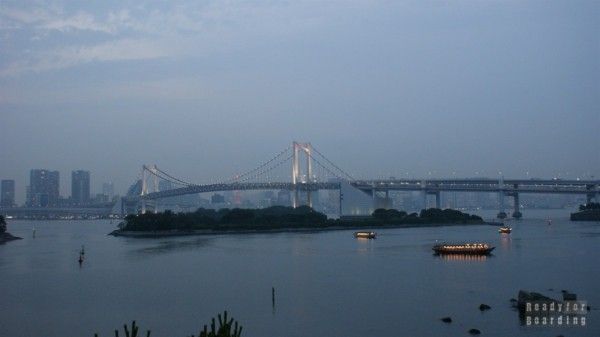
There are also numerous shopping centers (e.g. center, where most of the stores are dog accessories). For manga/anime fans, we especially recommend the following Gundam robot, Which stands in front of the Diver City center – apparently on a true scale. At first it was difficult for us to find it, it is hidden as if from the middle of the island, at the lower entrance directly to the level with food.
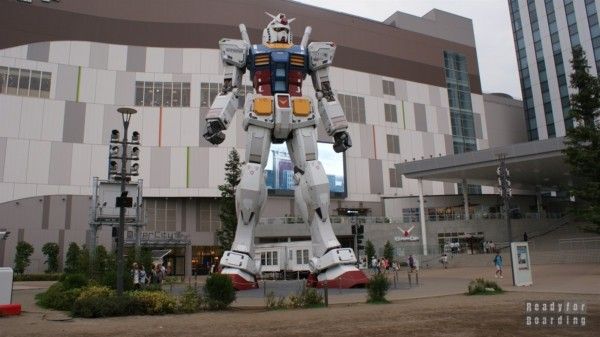
Japanese specialties 🙂
We also encourage you to go into the center itself, where there are quite a few restaurants where you can eat something good 🙂 We were tempted to eat something that just looked interesting in the photo, because we couldn't figure out what it was for anything. This thing was our first ever noodle soup eaten with chopsticks (!) and egg "meatballs" with little octopuses (!). Interesting combination.
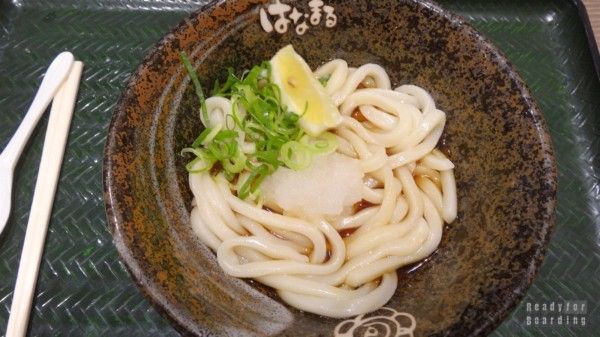

And more. How do you think, would you find yourselves in such a restroom? 🙂

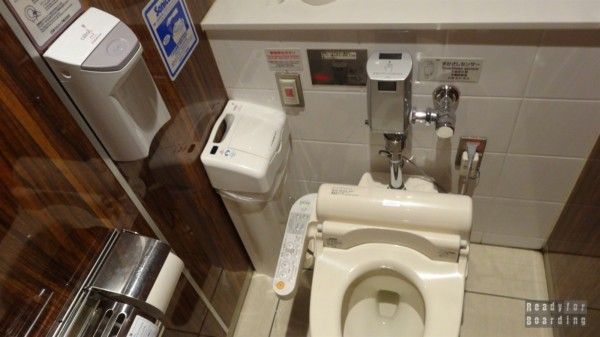
On the island itself we stayed until evening to admire the illuminated bridge, boardwalk and the aforementioned boats. It was late in the evening when we returned to our hotel.

